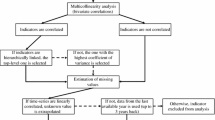Abstract
To be most useful in the resource acquisition and resource allocation processes, cost studies require the collection of detailed information from “comparable” institutions. This investigation reports the rationale, procedures, and outcomes of an attempt to identify institutions that were comparable to specific universities operating under the Kansas Board of Regents. The three-phase study involved (1) selecting states that were similar to Kansas on several key variables, (2) using information about breadth of academic programs and locale to identify public universities in those states that resembled a given Kansas institution on these features, and (3) using detailed information about enrollment, expenditure pattern, and academic emphases to measure the similarity of universities in each pool to a given Regents university. The system produced results that proved to be credible by three different tests and responded effectively to some issues involving the Kansas formula funding process. It is sufficiently flexible that it could be adapted to other states or universities whose rationale or assumptions differed from those employed in Kansas.
Similar content being viewed by others
References
Board of Regents,Minutes of the Budget and Finance Committee, March 17, 1978.
Bureau of the Census.1977 Population Estimates, Series P-25 and P-26. Washington: U.S. Government Printing Office, 1978.
Council of Presidents,Minutes, September 14, 1978.
Department of Commerce.Survey of Current Business. Washington: U.S. Government Printing Office, April 1979.
Elsass, J. E., and Lingenfelter, P. E. An identification of college and university peer groups. Springfield, Illinois: Illinois Board of Higher Education, 1980. (Mimeo)
McCoy, M. Selection of similar or peer institutions among the major doctoral institutions in the U.S., preliminary results. Boulder, Colorado: National Center for Higher Education Management Systems, 1980. (Mimeo)
NCES.Fall Enrollment in College and Universities, 1978, Preliminary Estimates. Washington: U.S. Government Printing Office, 1978.
Smart, J. C.; Martin, R. O.; and Elton, C. F. Qualitative and conventional indices of benchmark institutions.Proceedings, Association for Institutional Research, Atlanta, Georgia, 1980, p. 73. (Abstract)
Terenzini, P. T.; Hartmark, L.; Lorang, W. G., Jr.; and Shirley, R. C. A conceptual and methodological approach to the identification of peer institutions.Research in Higher Education 1980,12 347–364.
WICHE.High School Graduates: Projections for the 50 States. Boulder, Colorado: Western Interstate Commission on Higher Education, 1979.
Author information
Authors and Affiliations
Rights and permissions
About this article
Cite this article
Rawson, T.M., Hoyt, D.P. & Teeter, D.J. Identifying “comparable” institutions. Res High Educ 18, 299–310 (1983). https://doi.org/10.1007/BF00979602
Received:
Issue Date:
DOI: https://doi.org/10.1007/BF00979602




